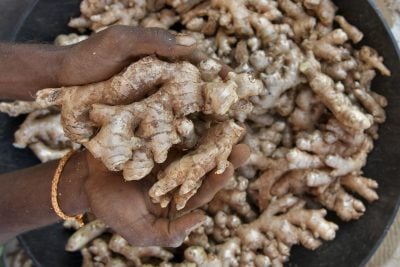Base Titanium announced on 30 October that it is to cease mining activities in Kwale, Kenya, by the end of 2024. The Australian firm commenced production at Kwale in 2013 and has in the past decade risen to become the most successful large-scale miner in Kenya’s history. But the producer and exporter of titanium ore minerals – such as ilmenite, rutile and zircon – has failed to find new mineral resources to extend its mining operations.
“We have explored all avenues for further extending the life of Kwale Operations. However, despite these efforts and broad support from the local community, we have been unsuccessful in identifying additional mineral deposits of sufficient grade or scale to support a further extension,” said Tim Carstens, managing director of Base Resources, the parent firm, in the October announcement.
Base Titanium’s divestment from Kenya is a setback for the country’s mining industry in light of the pivotal role that the company has played in boosting the extractive sector’s fortunes. Data from the Economic Survey 2023 by the Kenya National Bureau of Statistics shows that, of the Ksh35.23bn ($230m) that Kenya earned from mineral production in 2022, a staggering 80% – Ksh28.25bn – came from the export of titanium ore minerals produced in Kwale by Base Titanium.
Counting losses
As part of the process of winding down its mining operations, Base Titanium has commissioned feasibility studies to establish the best way to use the land after operations cease. Several options currently being considered include large-scale agriculture, sustainable conservation and industrial training.
“Our fundamental objective is to transition Kwale operations to a post-mining state in a manner that cements our reputation for excellence in the full lifecycle of mining,” noted Carstens. He added that the mining company’s focus will now shift to its Toliara Project in Madagascar, where it hopes to develop a titanium mine. It will also continue its exploration activities in Kenya and Tanzania, and pursue other business opportunities in the region.
Base Titanium’s departure will have an outsized impact on Kenya’s extractives sector. The company employs about 870 people, mostly local, according to its filings. These jobs will be lost, affecting households and communities, and slowing down the rural Kwale economy.
Local suppliers will also lose business opportunities, as the company paid them $66.2m (around Ksh10.08bn) in the financial year ending on 30 June 2023, which was 80% of its total procurement spending in that period.
The government is also set to lose out. In the 2023 financial year, Base Titanium paid over $54.35m (around Ksh8.27bn) in direct tax, royalties, VAT and other statutory payments. Overall, the company’s total payments to the government and other national entities since operations commenced total over $306.7m (around Ksh46.7bn).
Fast-tracking mining reforms
As Base Titanium prepares to exit the country, Kenya is looking for ways to boost its mining industry and attract new investors. The Ministry of Mining, Blue Economy and Maritime Affairs has announced that it is reforming the mining sector and lifting a 2019 ban on new mining licences and on renewals.
Through a statement issued in October, the Ministry said that the ban has been lifted for all construction and industrial minerals, while strategic minerals will be handled on a case-by-case basis according to the Mining (Strategic Minerals) Regulations, 2017. The end of the ban could open up new opportunities for exploration and production in the mining sector, and help offset some of the losses caused by Base Titanium’s departure.
Experts say that the ban discouraged new investments in the sector. “The government has argued that the moratorium was necessary for streamlining the sector, mapping mineral resources, and ensuring the validity of permits and activities. However, the moratorium’s extent, duration and general ambiguity have negatively impacted the sector, frustrating investors and other stakeholders by preventing any new investments and slowing down operations and possible expansion of existing projects,” notes Rainbow Field, Matthew Arrumm and Njoroge Kangethe of South Africa-based law firm Bowmans in an analysis on Kenya’s mining sector. According to this analysis, land rights are a crucial factor for attracting new investors in the mining sector of Kenya. “Careful navigation around Kenya’s land regulatory framework is critical for the bankability of major projects and will continue to be key in mining projects,” they observe.
In addition to lifting the moratorium, other reforms that the Ministry of Mining is undertaking include the establishment of local processing zones. “The Ministry has also initiated plans to encourage in-country mineral processing and value addition following realisation of the immense benefits of exporting finished product,” said Salim Mvurya, the Ministry’s cabinet secretary, in an October press conference in Nairobi.
Bringing informal miners into the fold
Mvurya also highlighted the move to decriminalise artisanal and small-scale mining activities as an example of another important reform that his Ministry is undertaking. Artisanal mining is a type of mining activity that involves using manual labour, basic tools and low-tech equipment to extract minerals from the earth.
Kenya has rich deposits of gold and gemstones that are mostly mined by artisanal mining workers. Despite the informal nature of artisanal mining, it is an increasingly important source of livelihood for many Kenyans, supporting as many as 800,000 people, according to a study by Pact, an international human development non-profit.
The artisanal mining sector in Kenya operates largely outside the legal framework, with limited access to finance, technology, and safety standards. This creates challenges for the government to monitor, tax, and regulate the sector, as well as to address environmental and social impacts.
Artisanal miners often lack access to markets, exposing them to exploitation by middlemen who pay them cents on the dollar. “To reduce exploitation of artisanal miners by middle-men, the State Department in collaboration with county governments has initiated the process of setting aside mineral trading centres where buyers and sellers can trade their commodities in the presence of government officers,” said Mvurya.
Could forestry be an alternative to mining?
Although the mining industry’s reforms are a welcome move, they are unlikely to yield immediate results. Kenya therefore needs to do more to cushion the extractives sector and the wider economy from the impact of Base Titanium’s departure.
Oil and gas production, another key component of the extractives sector, is not an option for Kenya at the moment. Despite the discovery of commercially viable crude oil deposits in the north-western Turkana region in 2012, the project has been plagued by incessant delays and production has never commenced.
Forestry, however, offers a new opportunity for Kenya to offset the decline in its extractives sector. Forestry is similar to mining and oil and gas extraction in that it involves taking natural resources from the earth. The production of timber and other forest products has been a vital industry in the extractives sector for a long time. But forests today have more economic value than just timber. Thanks to the global investment trend towards environmental sustainability, forests can now play a bigger role in attracting global capital to Kenya and helping to mitigate the climate crisis.
Kenya is on track to achieve its goal of 20% forest cover by 2030, having reached the halfway mark in 2022, according to the Kenya Forest Service (KFS). This could boost the country’s chances of attracting more climate finance from global investors. Africa requires $250bn annually to implement its climate commitments under the Paris Agreement, but only got $30bn in 2020, according to the World Economic Forum. To bridge this gap, African leaders are seeking to partner with international financiers and leverage their climate assets such as forests.
Keen to sustain the gains made in expanding the country’s forest cover, President William Ruto declared 13 November 2023 a national holiday for tree planting. The surprise announcement was one part of Kenya’s ambitious plan to plant 15bn trees by 2032. KFS reported that Kenya planted over 1.8bn trees from 2019 to 2022. With its growing forest cover, Kenya could benefit from the carbon credit markets and enhance its resilience to climate change. When trees are planted or conserved to sequester additional carbon, they can generate carbon credits. Each carbon credit represents the reduction or removal of one ton of carbon dioxide or its equivalent in other greenhouse gases. Companies and individuals can then buy or sell these carbon credits.
As climate change accelerates, demand for carbon credits has exploded. During the Africa Climate summit in September 2023 in Nairobi, President Ruto stated that Africa’s carbon sinks were an “unparalleled economic goldmine”.
“They have the potential to absorb millions of tons of carbon dioxide annually, which should translate into billions of dollars,” he pointed out.
Kenya leads Africa in carbon credits
Kenya is a leader in Africa when it comes to selling carbon credits from nature-based solutions, a report by ClimateFocus reveals. The Voluntary Carbon Market Overview 2022 shows that Kenya issued 26m metric tons of carbon dioxide equivalent of carbon offsets from 2016 to 2021. This was the highest amount among African countries and accounted for about 20% of the continent’s total credits.
Another report by KEPSA, a Kenyan private sector lobby, and TheRockGroup, a sustainability consulting firm, says that Kenya has the potential to generate up to $600m annually from carbon market projects by 2030. The report estimates that Kenya can sequester, reduce, or avoid around 30m metric tons of carbon dioxide equivalent per year using an average price of $20 per ton.
So as Kenya’s mining sector faces uncertainty after Base Titanium’s planned exit, the country could explore other ways to harness its natural resources for economic growth. Clearly one of these is forestry, which could be a lucrative and environmentally friendly sector for Kenya, help diversify its economy, and combat the climate crisis.
Want to continue reading? Subscribe today.
You've read all your free articles for this month! Subscribe now to enjoy full access to our content.
Digital Monthly
£8.00 / month
Receive full unlimited access to our articles, opinions, podcasts and more.
Digital Yearly
£70.00 / year
Our best value offer - save £26 and gain access to all of our digital content for an entire year!

 Sign in with Google
Sign in with Google 



